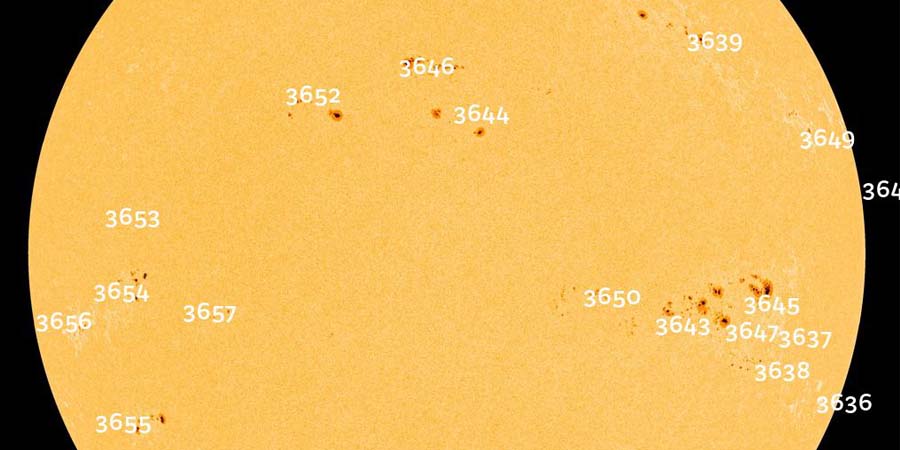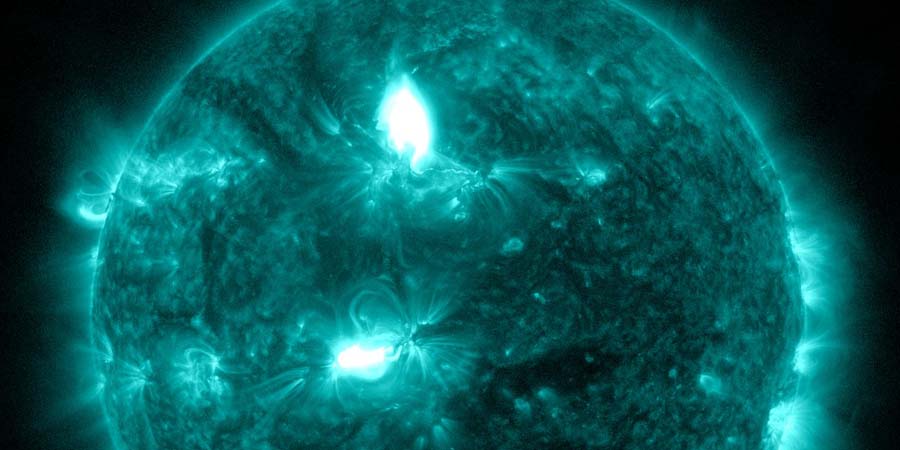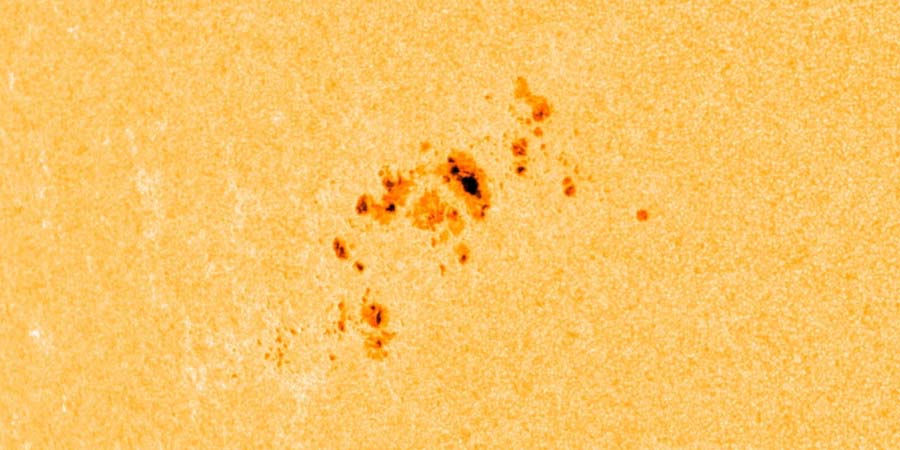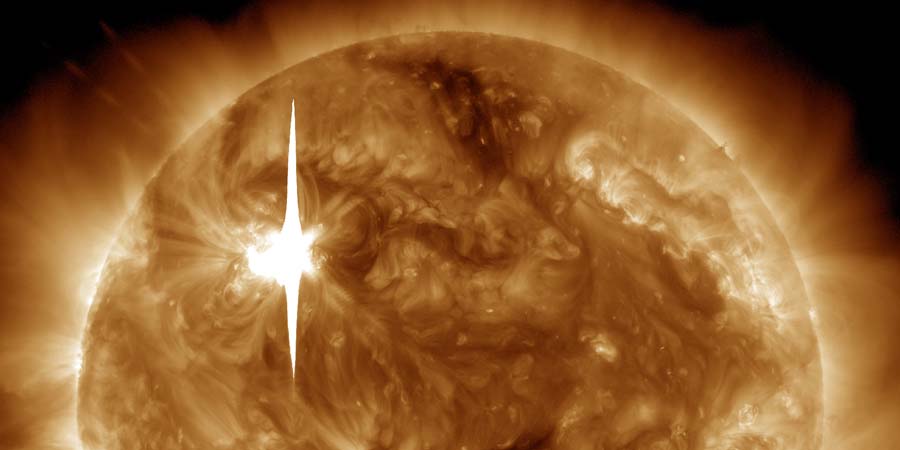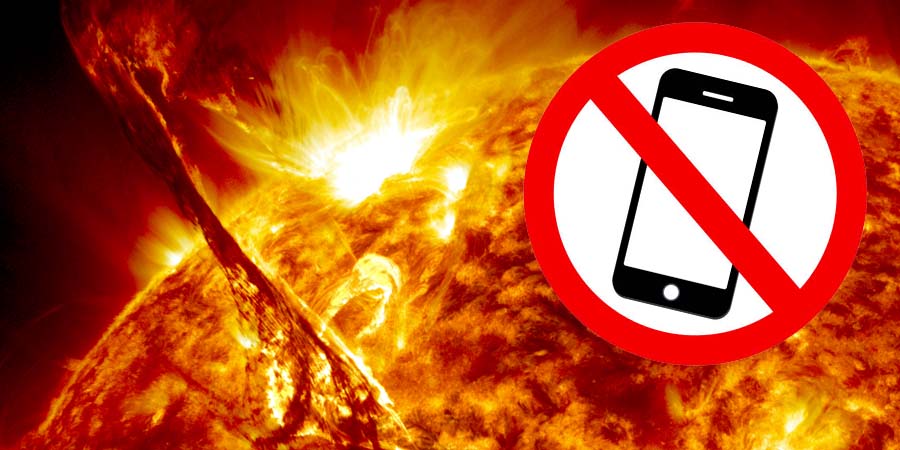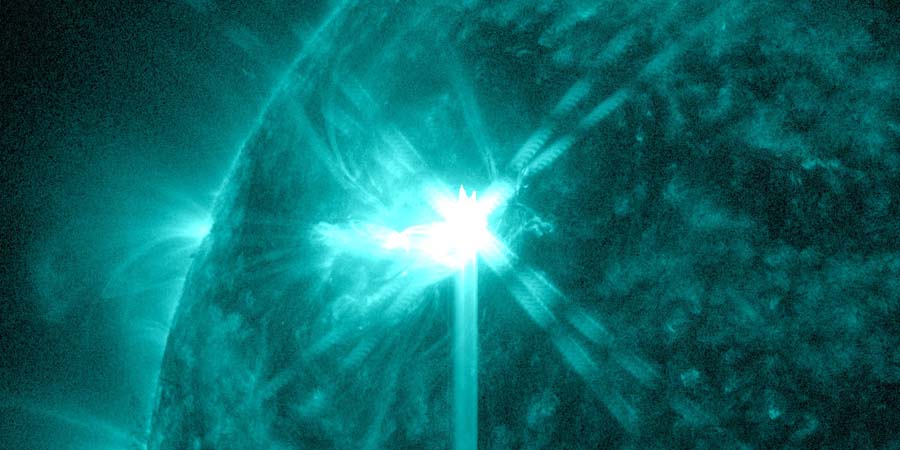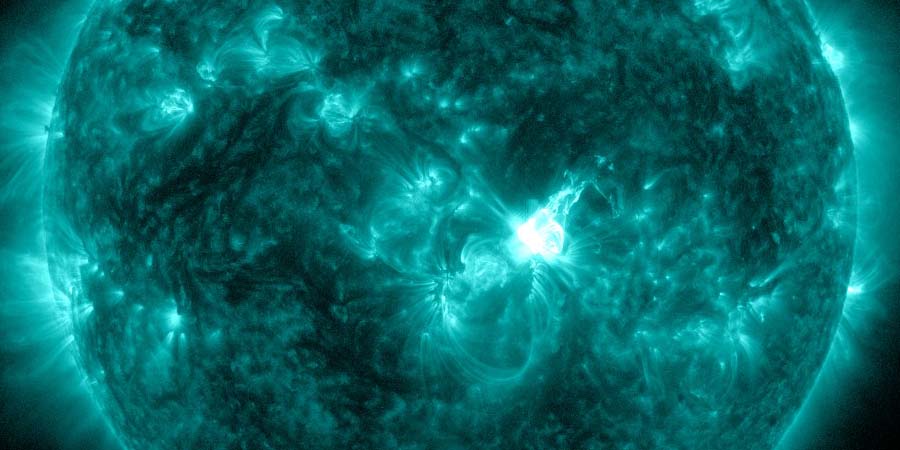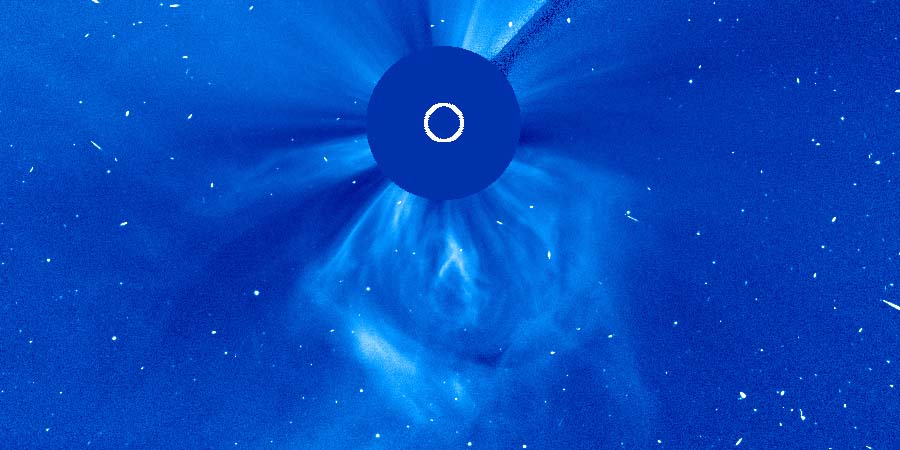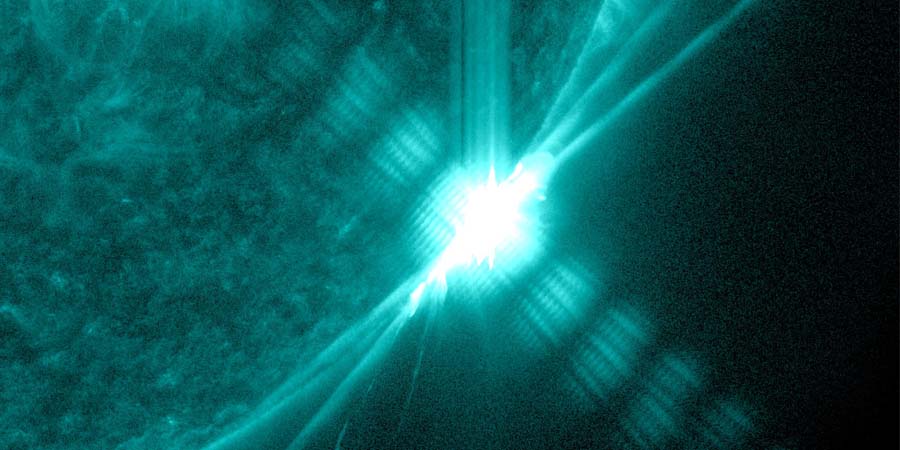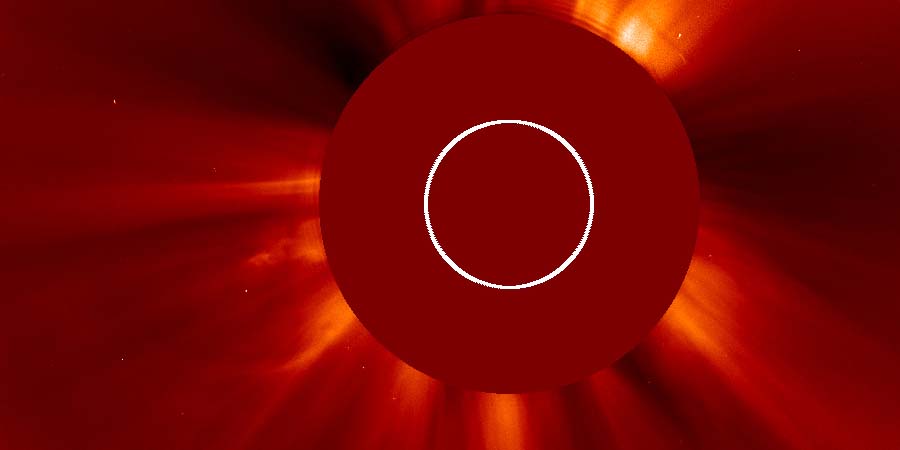Latest news updates Subscribe
Lot's of sunspots! Big chance for major flare activity?
poniedziałek, 22 kwietnia 2024 21:58 UTC
Our Sun is peppered with numbered sunspot regions at the moment... 18 to be precise! This adds up to a sunspot number of 283 which is very high.
X1.1 solar flare with earth-directed CME
sobota, 23 marca 2024 13:36 UTC
A complex eruption took place today which peaked at 01:33 UTC. The associated solar flare reached a peak of X1.1 (R3-strong) and came from sunspot region 3614. An unremarkable sunspot region north of sunspot region 3615. We say that the eruption is complicated because sunspot region 3615 flared at the same time but everything points to the solar flare and resulting eruption from sunspot region 3614 being stronger.
Sunspot region 3615, G1 watch
środa, 20 marca 2024 14:57 UTC
March has been a relatively quiet month thus far. We did had a moderate G2 geomagnetic storm back on the 3rd of March but other than a couple of unremarkable M-class solar flares not much has happened considering we are probably nearing the peak of Solar Cycle 24. But... we do have two topics to cover today. Sunspot region 3615 is an interesting sunspot region currently on the earth-facing disk and a minor G1 geomagnetic storm watch is in effect for today and tomorrow.
X6.3 solar flare
czwartek, 22 lutego 2024 22:55 UTC
Sunspot region 3590 does it again! It's third X-class soalr flare and the strongest solar flare of the currently Solar Cycle thus far peaking at a respectable value of X6.3 (R3-strong).
Did space weather really knock out cell phone service in North America?
czwartek, 22 lutego 2024 21:53 UTC
It's a hot topic today... North America woke up this morning with nationwide cell phone outage for AT&T. Is this caused by the two X-class solar flares from sunspot region 3590? A lot of people seem to think that is the case but this is completely false. Christian Harris from Space Weather Trackers made a great post explaining why space weather is not to blame for this outage. Correlation is not causation. Read his post below!
Two X-class solar flares only 7 hours apart
czwartek, 22 lutego 2024 08:33 UTC
Sunspot region 3590 which is located at a fairly high latitude produced two impulsive X-class events. The first solar flare peaked yesterday at 23:07 UTC with a maximum X-ray flux of X1.9 and the second solar flare peaked today at 06:32 with a maximum observed X-ray flux of X1.7. Both events caused a brief strong R3 radio blackout at the day-side of our planet.
M9 solar flare with earth-directed CME
niedziela, 11 lutego 2024 17:24 UTC
Finally a sign of life from sunspot region 3576! It produced an M9.0 solar flare (R2-moderate) which peaked yesterday at 23:07 UTC. The solar flare was fairly impulsive but did produce a nice eruption with a mostly northward trajectory.
New day, new coronal mass ejections to look at!
sobota, 10 lutego 2024 18:34 UTC
Another day, another big coronal mass ejection... but this time it came from the south-east limb! The coronal mass ejection from yesterday's X3.3 solar flare was impressive but we have yet another fine specimen to look at. An incoming sunspot region erupted with a M3.4 solar flare that peaked at 03:54 UTC. This coronal mass ejection is just like the coronal mass ejection from the X3.3 solar flare not aimed at our planet.
X3.3 solar flare
piątek, 9 lutego 2024 18:15 UTC
Departing sunspot region 3575 which is already behind the south-west limb said goodbye this afternoon with a major X3.3 (R3-strong) solar flare which peaked at 13:14 UTC.
G2 geomagnetic storm watch
niedziela, 21 stycznia 2024 19:41 UTC
A moderate G2 geomagnetic storm watch has been issued by the NOAA SWPC for Monday, 22 January and Tuesday, 23 January. This is due to the expected arrival of a coronal mass ejection launched by a eruption south of sunspot region 3557 early yesterday morning.
Najnowsze wiadomości
Najnowsze wiadomości z forum
Wesprzyj SpaceWeatherLive.com!
Wielu ludzi odwiedza SpaceWeatherLive aby śledzić aktywność słoneczną lub sprawdzić czy jest szansa na zaobserwowanie zorzy polarnej. Niestety, większy ruch na stronie oznacza większe koszty utrzymania serwera. Dlatego, jeśli jesteś zadowolony ze strony SpaceWeatherLive, zachęcamy do wspierania nas finansowo. Dzięki temu będziemy mogli utrzymać naszą stronę.

Fakty na temat pogody kosmicznej
| Ostatnie rozbłyski klasy X | 2024/03/28 | X1.1 |
| Ostatnie rozbłyski klasy M | 2024/04/24 | M2.0 |
| Ostatnia burza geomagnetyczna | 2024/04/19 | Kp7 (G3) |
| Spotless days | |
|---|---|
| Ostatni dzień bez skazy | 2022/06/08 |
| Monthly mean Sunspot Number | |
|---|---|
| marca 2024 | 104.9 -19.8 |
| Last 30 days | 133.9 +26.6 |
